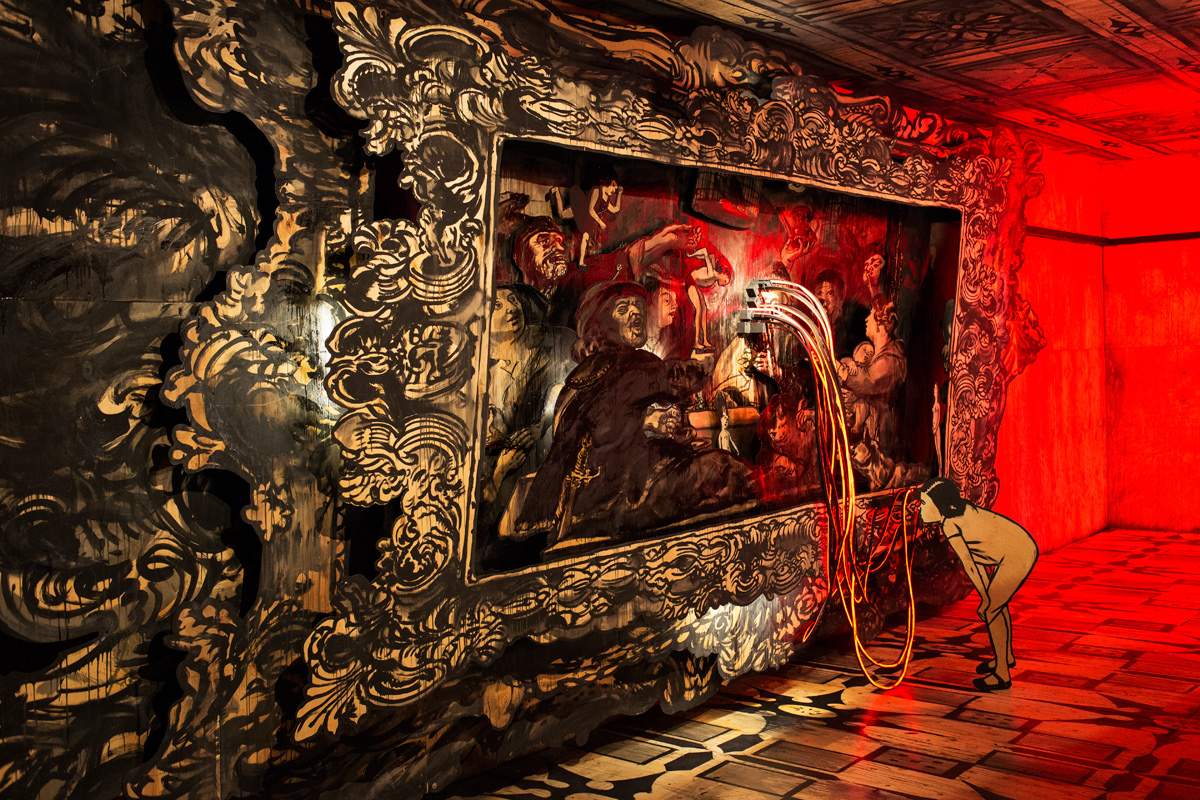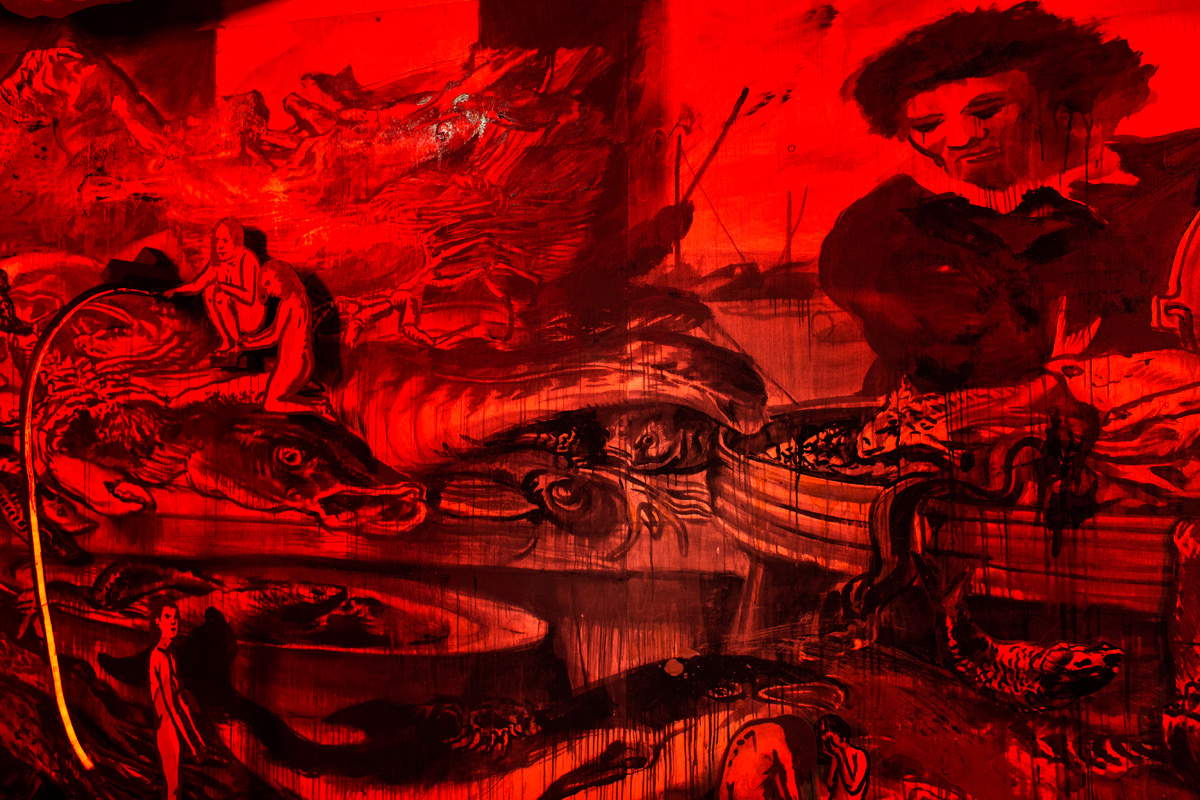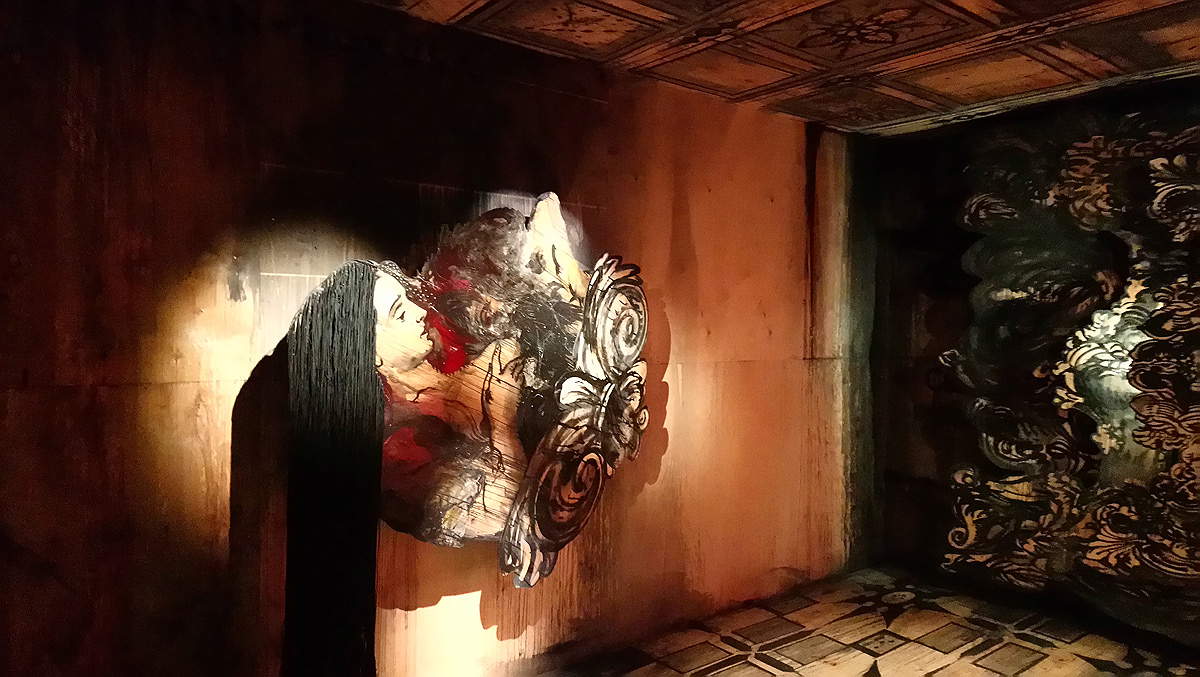by Redazione , published on 19/06/2019
Categories: Exhibitions
/ Disclaimer
Titled 'Lk. 15:11-32' and paying homage to Rembrandt is the exhibition that the Russia Pavilion is presenting at the Venice Biennale.
At the fifty-eighth edition of the Venice Biennale, Russia is presented with the exhibition Lk. 15:11-32, curated by the general director of the Hermitage in St. Petersburg, Mikhail Piotrovsky, and with works by filmmaker Alexander Sokurov (Podorvikha, 1951) and artist Alexander Shishkin-Hokusai (St. Petersburg, 1969). The exhibition designed for the Pavilion of Russia refers to the chapter of Luke’s Gospel in which the parable of the Prodigal Son is recounted, and is a tribute to the painting by Rembrandt van Rijn (Leiden, 1606 - Amsterdam, 1669) having the same subject as its theme. Visitors, in visiting the pavilion, will have an immersive experience that will bring to Venice some features of the iconic Russian museum, which is reimagined by two contemporary artists who, in approaching their work, started from the painting preserved at the Hermitage.
In the first room of the pavilion, the public will observe exact replicas of the legs of one of the Hermitage Atlases, the large figures that since 1848 have been supporting the roof of the portico at the entrance to the New Hermitage, a building specially constructed to house the imperial collection (and over time the figures have themselves become the object of admiration by many people who come from all over the world specifically to admire them). Rembrandt’s The Return of the Prodigal Son is then the theme of a new installation imagined by renowned director Sokurov, who for the Pavilion of Russia has envisioned an environment that simultaneously represents a hall of the Hermitage and an artist’s studio, thus creating a tension in which Rembrandt’s paintings acquire new forms and meanings, juxtaposed with the upheavals of the modern world that flow across a screen.
The pavilion’s interior staircase takes the audience inside the world of Dutch painting that is brought to life by Alexander Shishkin-Hokusai. Inspired by the mechanisms that animate the clocks in the Winter Palace and influenced by the masterpieces of the old Dutch masters in the Hermitage, the artist has created wooden sculptures that move mechanically at set intervals in front of reproductions (also made of wood) of Hermitage artworks that run on tracks. The scene has been imagined as a theater that breaks the boundaries between reality and imagination.
The Pavilion of Russia also has its own website(www.ruspavilion.com) in addition to social channels on Facebook and Instagram reachable on the ruspavilion accounts.
The Russia Pavilion is ranked fourth in the top ten national pavilions of the 2019 Biennale according to Finestre Sull’Arte. Read the full ranking here.
 |
| Pavilion of Russia. Ph. Credit Francesco Galli. © La Biennale di Venezia |
 |
| Pavilion of Russia. Ph. Credit Francesco Galli. © La Biennale di Venezia. |
 |
| Pavilion of Russia. Ph. Credit Finestre Sull’Arte. |
 |
| Pavilion of Russia. Ph. Credit Finestre Sull’Arte |
 |
| Pavilion of Russia. Ph. Credit Finestre Sull’Arte |
 |
| A little theater that pays homage to Rembrandt at the Russia Pavilion for the Venice Biennale |
Warning: the translation into English of the original Italian article was created using automatic tools.
We undertake to review all articles, but we do not guarantee the total absence of inaccuracies in the translation due to the program. You can
find the original by clicking on the ITA button. If you find any mistake,please contact us.





